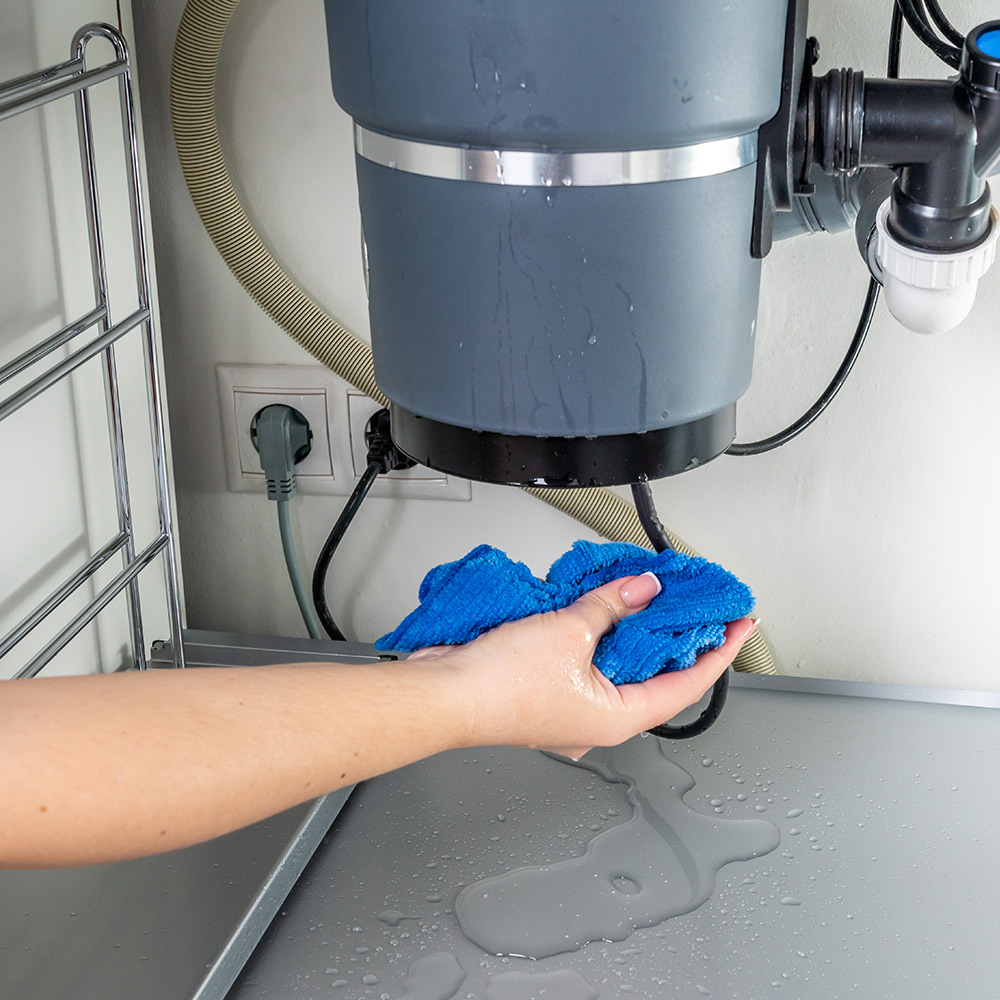The content in the next paragraphs pertaining to Why Is My Garbage Disposal Leaking From the Bottom? is really intriguing. Read it yourself and see what you think of it.

Garbage disposals are vital cooking area appliances that aid in taking care of food waste efficiently. Nevertheless, a dripping garbage disposal can be a discouraging and untidy trouble to manage. Fortunately, numerous leaks can be taken care of conveniently with a couple of straightforward actions. In this write-up, we will certainly review just how to repair a dripping garbage disposal effectively.
Intro
Garbage disposals are set up under kitchen sinks and are designed to shred food waste right into smaller pieces, enabling it to travel through the pipes system easily. While these tools are generally trusted, leaks can occur in time because of damage, loosened links, or damages to the device.
Usual Causes of Leaks in Garbage Disposals
Worn Seals and Gaskets
Seals and gaskets play a critical duty in protecting against water from dripping out of the waste disposal unit. Gradually, these elements can weaken, resulting in leakages around the disposal device.
Loose Links
The links between the waste disposal unit and the pipes system can end up being loosened gradually, triggering water to leak out throughout procedure.
Cracks or Openings in the Disposal Unit
Physical damages to the garbage disposal, such as fractures or holes in the housing, can also cause leaks.
Recognizing the Source of the Leakage
Prior to trying to fix a leaking waste disposal unit, it is essential to determine the resource of the leak. This can normally be done through visual assessment or by performing easy tests.
Visual Inspection
Examine the waste disposal unit system meticulously for any signs of water leakage. Pay close attention to areas around seals, gaskets, and connection points.
Checking for Leaks
One method to evaluate for leaks is by running water through the disposal unit and looking for any kind of noticeable indicators of leak.
Tools and Materials Needed for Fixing a Dripping Waste Disposal Unit
Before beginning the repair process, collect the required tools and products, including a screwdriver, flexible wrench, plumbing professional's putty, replacement seals or gaskets, and epoxy or patching material for fixing fractures or openings.
Step-by-Step Guide to Dealing With a Dripping Waste Disposal Unit
Shut off the Power
Before trying any repair work, ensure that the power to the waste disposal unit unit is switched off to avoid the danger of electric shock.
Find the Leak
Identify the specific location of the leakage and determine the cause.
Tighten up Links
Use a wrench to tighten up any type of loosened connections in between the disposal device and the plumbing system.
Replace Seals or Gaskets
If the leakage results from worn seals or gaskets, remove the old parts and replace them with new ones.
Patching Splits or Openings
For fractures or holes in the disposal device, usage epoxy or a suitable patching product to seal the broken area.
Checking the Garbage Disposal After Repair Work
As soon as the repair service is full, evaluate the waste disposal unit by running water through it to make sure that the leakage has been settled.
Preventive Upkeep Tips to Avoid Future Leaks
To avoid future leakages, it is necessary to do normal maintenance on your garbage disposal. This consists of keeping it tidy, staying clear of placing non-food items or hard objects down the disposal, and periodically checking for leaks or other issues.
Verdict
Finally, fixing a leaking waste disposal unit is a reasonably simple process that can be completed with standard devices and materials. By following the actions detailed in this write-up and practicing preventative maintenance, you can maintain your waste disposal unit in good working problem and prevent expensive fixings in the future.
HERE’S HOW TO FIX YOUR GARBAGE DISPOSAL
WHAT TO DO IF SOMETHING IS STUCK IN YOUR GARBAGE DISPOSAL
If the impeller won’t turn, there’s probably something stuck in the disposal. It could be a steak bone or peach pit, although plumbers report pulling all sorts of inappropriate objects out of disposals, such as bottle caps or aluminum foil. Make sure power to the disposal is off, and look inside to see if you can see the source of the jam.
Never stick your fingers in a disposal. Pull out anything you see with tongs or pliers.
If the disposal still won’t work, it may be time to call a plumber or consider buying a new disposal. GEM Plumbing & Heating is here for all of your garbage disposal needs.
WHAT TO DO IF YOUR GARBAGE DISPOSAL DRAIN IS CLOGGED
Take everything out from underneath your sink and put a bucket or other container under your disposal to catch any water that drains out. Disconnect your disposal from the power supply. If it’s plugged into a wall outlet, unplug it. If it’s hardwired into an electrical box, go to the electrical panel and turn off the breaker for the disposal. Pour ¼ cup of baking soda into the drain, followed by ½ cup of white vinegar. Give the solution a few minutes to fizz and do its work. Look into the disposal with a flashlight to see if you can see an object that might be causing the clog. If you see it, remove it using tongs or pliers. MORE TIPS ON DEALING WITH A CLOGGED GARBAGE DISPOSAL
Never use drain cleaner in a garbage disposal. It can damage the plastic parts inside the disposal. You can also be splashed with the caustic liquid while working to clear the clog. Beware! Never stick your fingers into a garbage disposal. Trust us — not a good idea. In many instances, your dishwasher drains through your garbage disposal. This allows the disposal to grind any large food particles that may be drained out of your dishwasher. There are some jurisdictions, however, where the plumbing code prohibits such a connection. WHAT TO DO WHEN YOUR DISHWASHER DRAINS THROUGH THE DISPOSAL
Run some water in the sink so your plunger has at least a ½-inch of water to create a seal and plunge vigorously up and down several times. You may need to repeat this several times. Run hot water down the drain to clear any residue that remains.

I came across that blog entry on Why Is while looking around the internet. You should take the time to share this post if you enjoyed reading it. Thank you so much for taking the time to read it.
Top Article